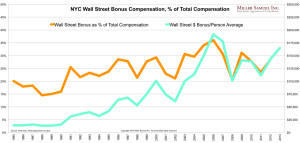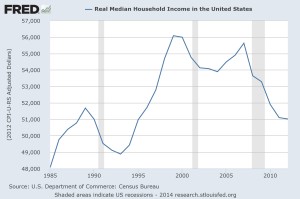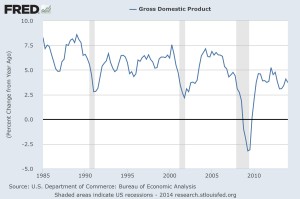Recently some market prognosticators have alluded to similarities between today’s investment environment and that of the mid-1990’s (among others, Liz Ann Sonders at Charles Schwab). Remembering back to that time, the three predominant forces that all strategists addressed in their commentaries were technology (the internet), falling interest rates and globalization (the fall of the Berlin Wall and the rise of the Asian Tigers). Of course, these trends weren’t necessarily independent from one another, and our economy today reflects the continued impact of all three elements.
Globalization continues to progress and expand as places such as Vietnam and countries in Africa replace the former developing markets of China and countries within Latin America. Interest rates have arguably bottomed, but remain low (notwithstanding the vastly increased levels of global debt – another topic for another day). Perhaps most importantly though, technology advances driven by the internet have continued to evolve, encompassing smart phones and other mobile computing devices along with the emergence of the cloud.
As an angel investor I hear many pitches from startup ventures, and I have noted that a significant proportion of new business ideas entail a use of the mobile device /cloud platform model. Some that come to mind include:
- a system for police evidence gathering, data management and diagnostics;
- a process for emergency room response and patient data management;
- online educational assessments and in-classroom diagnostics;
- health care supply management with wearable bar code apparatus for inventory ordering; and
- data collection and management for use in preparing environmental impact statements.
Granted, this paradigm has been in play for at least four or five years. But the level of innovation unleashed – as it permeates almost every business field and process – reminds me of the impact those early internet innovations had on that mid-1990’s economy… the productivity enhancements therein, and the consequential investment opportunities that resulted for many years to come.
A recent publication by Berkeley Professor John Zysman encapsulates the importance of the cloud concept. Essentially he finds that the internet was a catalyst for productivity because it enabled a decomposition of sorts in the production and delivery of goods, a reallocation of resource inputs to their cheapest source, and subsequent formations of global supply chain networks. Productivity growth was robust as this occurred. Today, the cloud not only extends the potential for enhanced productivity, but it almost leverages that productivity back upon itself and expands from there.
As noted by Sand Hill Group, the McKinsey Global Institute, and Deloitte Access Economics, the most obvious element of this process reflects the fact that the mobile/cloud platform can be used by anybody, whether consumer, employer, or coder on-the-go, because cloud support can be accessed independent of location and computing infrastructure. That means we can work while riding a bus, we can collaborate with our colleagues at any place and time, and we can launch a new business with a relatively limited capital investment regardless of that business’s potential for growth.
Zysman’s piece discusses the cloud in its beginning years as a concept of architecture, in other words, a new way of organizing computing, that has now evolved to include implementation features around how those new architectural concepts are put to work. And as production was deconstructed with the aid of internet, services on the cloud platform can now be segmented into each step, reconfigured and customized into entirely new elements of enhanced value for the user (thus leveraging productivity back upon itself). Intense resources are now widely available and technological innovation is accelerated by the access and deployment of big data, design tools, analytics, prototyping, and sophisticated logistics and algorithms. And as the development of applications on the cloud can be decoupled from the infrastructure, it lessens the investment requirements and speeds the time-to-value for any given business or technical innovation.
The investment community in the mid-1990’s pondered the economic importance of the internet with comparisons to the industrial revolution. The truth around that allusion may remain debatable…. However, the innovation and disruption arising as the cloud develops, and the resulting ongoing productivity gains, are at least as impactful to the economy and financial markets today as were those dot.com investment opportunities we all marveled upon two decades ago. Maybe that’s where the 1990’s mid-bull market similarities align.
Is the innovation of the cloud platform as important as the internet was before it? (Comment below)








